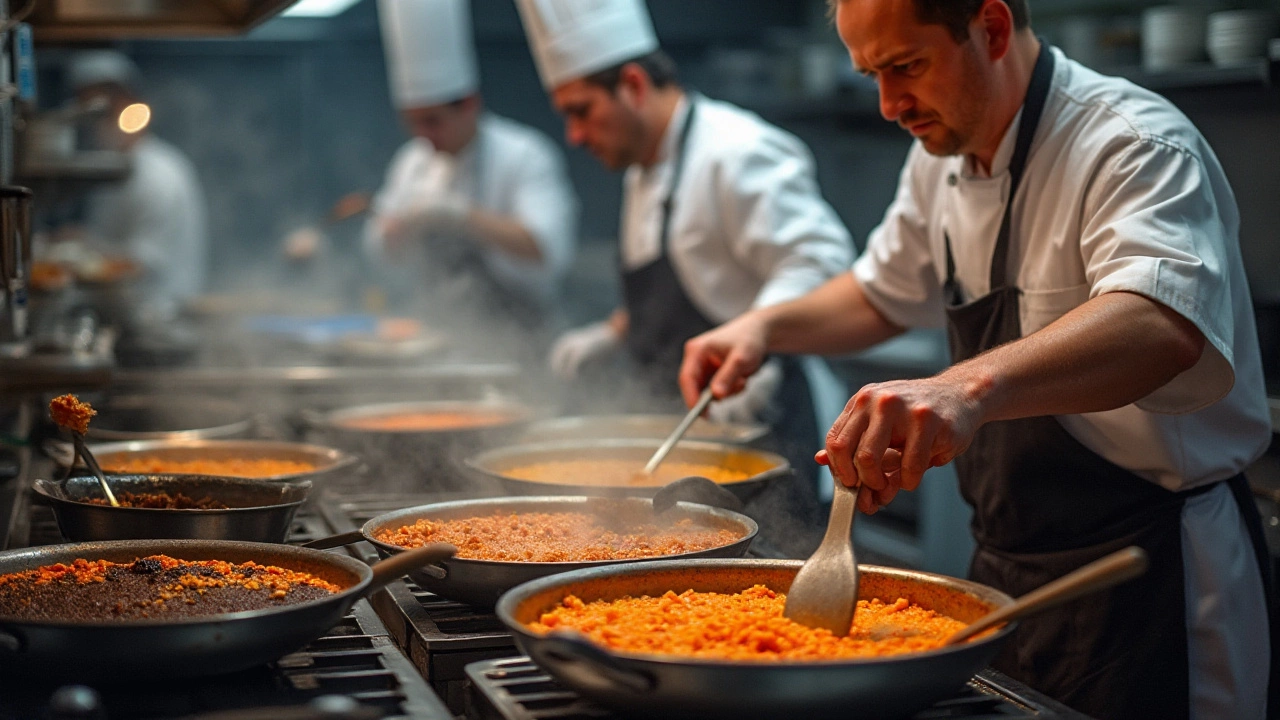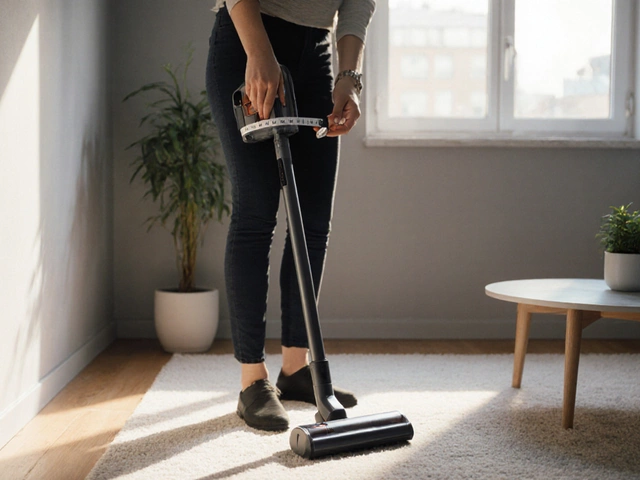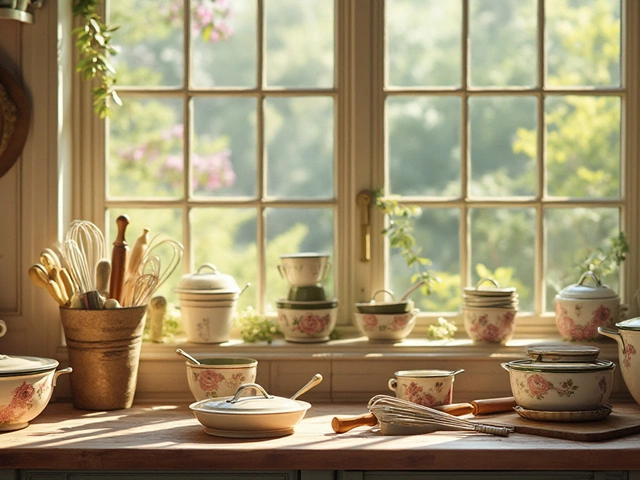In any bustling restaurant kitchen, you'll rarely find a chef reaching for a non-stick pan when preparing their signature dishes. Despite their ease of use and convenience, non-stick pans haven't found a permanent place in the culinary arsenal of many professionals.
Instead, chefs lean towards cookware that better suits their needs for heat tolerance, flavor enhancement, and longevity. Understanding the compelling reasons why chefs opt for materials like stainless steel and cast iron might just change the way you cook at home. Let's delve into the world of professional kitchen choices.
- The Popularity of Non-Stick Pans
- Professional Cooking Techniques
- Durability and Safety Concerns
- Flavor and Texture Considerations
- Alternatives to Non-Stick Cookware
- Tips for Choosing the Right Pan
The Popularity of Non-Stick Pans
Non-stick pans have become a beloved staple in home kitchens around the world for their incredible convenience. The seamless, smooth surface of these pans allows even the most novice cooks to flip pancakes and fry eggs with ease, making them an indispensable tool for those looking to avoid the frustration of food sticking to the pan. Non-stick pans are typically made with a coating called polytetrafluoroethylene (PTFE), famously known by the brand name Teflon, which provides the sleek, non-adhesive finish. This technology, developed in the mid-20th century, revolutionized cooking by minimizing the need for excessive oil and butter, offering a healthier alternative for those conscious of calorie intake or fat consumption.
What sets non-stick pans apart is their ability to heat up quickly and evenly, providing a reliable surface for consistent cooking. They're also incredibly easy to clean, usually requiring nothing more than a gentle wipe with a soapy sponge. This ease of care contributes heavily to their popularity; in the midst of a busy life, the simplicity of non-stick cookware saves both time and energy. Many people praise non-stick pans for their incredibly lightweight design compared to heavier materials like cast iron, making them easier to handle, especially for those with limited strength or dexterity.
Despite their advantages, non-stick pans are not without criticism. Carefully designed to produce incredible results in home kitchens, they often fall short under the demands of professional environments. The coating, while resilient to sticking, can become damaged if not cared for properly, rendering the beloved pan ineffective. Over time and with frequent use, the non-stick surface can begin to degrade, particularly if exposed to high temperatures or abrasive cleaning tools.
"Non-stick pans are perfect for low to medium heat applications, but in a fast-paced restaurant setting where high heat is the norm, they just don't hold up," shares a veteran chef interviewed in a popular culinary journal.
In the late 20th century, concerns about the safety of PTFE when overheated arose. Studies indicated that at temperatures above 500°F, the coating can begin to release harmful fumes, raising health and environmental concerns. This sparked a dialogue within the culinary community and among consumers about the risks associated with non-stick surfaces, leading many to seek alternatives that don't compromise on safety.
Product advancements have addressed several of these challenges, with manufacturers now producing non-stick pans using alternative materials such as ceramic coatings. These options aim to maintain the user-friendly nature of non-stick pans while enhancing their safety profile. Yet, in professional kitchens, where the integrity of a pan's surface is paramount, the lasting appeal of non-stick pans tends to wane. As durable and heat-tolerant alternatives prove their worth in creating impeccable culinary experiences, chefs often choose tools that stand the test of time, opting for durability and safety over convenience.
Professional Cooking Techniques
When it comes to crafting exceptional dishes, professional chefs have honed techniques that often require more than the average home kitchen can offer. One might wonder why they shy away from non-stick pans, and the answer lies deeply rooted in mastery of heat application and flavor development. The ability to control heat precisely allows chefs to execute techniques such as searing and deglazing, creating layers of flavor that make their dishes stand out. A hot pan, often made from stainless steel or cast iron, gives chefs the ability to develop a coveted brown crust known as the Maillard reaction. This reaction not only improves texture but enhances flavor, a result not easily achievable with non-stick surfaces that typically don't reach or hold the necessary high temperatures.
These methods are woven into the fabric of culinary expertise. Searing, for example, involves applying high heat to proteins to lock in juices and create a delicious brown crust. This is often followed by deglazing, a technique that involves adding liquid to a hot pan to lift caramelized bits of food that stick to the bottom, forming a rich base for sauces. The versatility and resilience of stainless steel or cast iron over non-stick pans allow this process to shine in professional kitchens. As Daniel Boulud, renowned French chef, once remarked,
"The secret of good cooking is, first, having a love of it...if you love it, you will have patience. Even if you do not know much about it, the fact that you love it will make you understand and keep you motivated."
The durability of surfaces like cast iron can also accommodate tools like whisks and metal spatulas which many chefs prefer, without fear of harming the pan. This contrasts with non-stick coatings that can degrade quickly if not handled carefully. Moreover, non-stick pans can emit harmful fumes when overheated, making chefs conscientious about the safety of their kitchen environments. For those focused on producing food that centers on both health and taste, the use of high-quality, sturdy pans provides peace of mind and better results.
In addition to being heat-resistant, stainless steel and cast iron pans can transition seamlessly from stovetop to oven, offering chefs unparalleled flexibility in both cooking and presentation. This seamless movement allows for the complex brazing techniques and finishing steps required in sophisticated professional dishes. Cajoling flavors from fresh ingredients onto the plate involves layers of taste and texture, which non-stick pans are often unable to produce. The choice of cookware is a deeply personal one, but understanding why chefs often lean away from non-stick pans can elevate even the simplest meal.
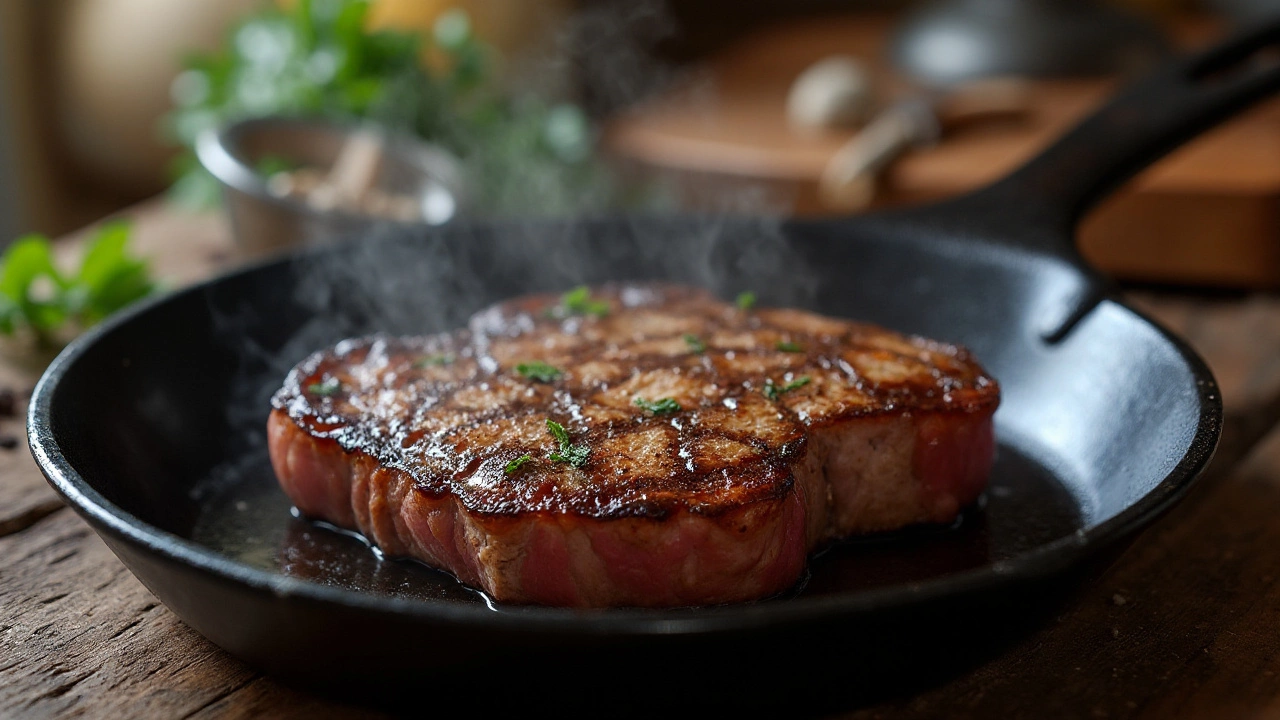
Durability and Safety Concerns
Non-stick pans are often celebrated for their slick surfaces that make cooking and cleaning a breeze. However, for professional chefs, durability and safety of cookware are paramount considerations. Non-stick coatings, typically made of polytetrafluoroethylene (PTFE), can start to degrade at high temperatures, typically above 500 degrees Fahrenheit. This degradation can release potentially harmful fumes and particles, a concern that resonates deeply within the culinary world, where high-temperature cooking is commonplace. As a result, many chefs opt for more robust materials that can withstand the rigors of high-heat cooking without breaking down.
Chefs also have to weigh the lifespan of their cookware in a busy kitchen. Non-stick coatings can scratch, peel, and wear off over time. In contrast, stainless steel and cast iron pans are famously durable; they can not only endure years of heavy use but often improve with age, acquiring a seasoning that enhances flavor. It's no surprise that cookware like this is seen as an investment rather than a convenient buy. As Julia Child once said,
"The only real stumbling block is fear of failure. In cooking you've got to have a what-the-hell attitude." This gritty durability resonates with chefs unafraid to experiment or push boundaries, knowing their tools won't let them down.
The safety concerns with non-stick pans extend beyond temperature. There’s also the question of what happens when those coatings start to flake off into food. Although generally considered safe by manufacturers, the idea of consuming tiny fragments doesn’t sit comfortably with those focused on the purity of ingredients. Chefs often choose stainless steel or cast iron pans because they don’t harbor such concerns. They provide a chemical-free, reliable surface that aligns well with a commitment to natural, health-focused cooking. Moreover, these pans can achieve an enviable sear on meats or vegetables, contributing to the culinary technique known as the Maillard reaction, which simply isn’t possible with non-stick surfaces.
The differences in durability and safety are stark when it comes to comparing non-stick pans with their more traditional counterparts. For instance, a simple scratch in a non-stick pan can start a cascade of surface degradation, while a cast-iron skillet, with a little seasoning love, will become non-stick over time. This transition to a naturally non-stick surface requires patience and care but provides a more satisfying and permanent solution in the long run. It's not just about longevity in physical form, but durability in delivering consistently high-quality results across various cooking contexts, from stovetop to oven, unlike many non-stick options that might fall short outside of basic frying tasks.
For home cooks considering whether to follow the professional's cue, understanding that durability often translates to both economics and quality in the long term is crucial. High-grade cookware doesn't just resist scratches and high heat; it adapts to a wide range of cooking styles. This flexibility is something that non-stick pans can rarely match, providing yet another reason why chefs might shy away from them. As proud stewards of tradition and precision, professional chefs are quite naturally selective about their tools, and their preference often signals a deeper understanding of how certain materials affect their cuisine’s healthfulness and integrity.
Flavor and Texture Considerations
When it comes to cooking, the texture and flavor of the food are paramount. For chefs, achieving that perfect sear, caramelization, or browning in dishes is often the difference between a good meal and an unforgettable one. That's why many professional kitchens opt for cookware that doesn't involve a non-stick layer. One of the primary reasons is that non-stick surfaces can inhibit the Maillard reaction. This is a chemical reaction between amino acids and reducing sugars that gives browned food its distinctive flavor. Stainless steel pans, in contrast, allow for the development of this deep, layered flavor because they can reach higher temperatures without the risk of damaging a non-stick coating.
Another important factor is the crust that forms during certain cooking methods, such as frying or sautéing. The lack of a non-stick surface enables bits of meat and vegetables, known as fond, to adhere to the pan. These brown bits are culinary treasures, often deglazed with wine or broth to create rich, complex sauces. Non-stick pans, with their slippery surfaces, don't allow for this type of flavor development, which is often critical in dish making. Paul Bocuse, a celebrated French chef, famously stated, "Without fond, there is no foundation of taste." This belief underscores the importance of cookware that can contribute to the depth of flavor chefs strive for.
Moreover, achieving the right texture is as crucial as flavor. Non-stick surfaces, while useful for preventing food from sticking, often do not support the texture control chefs seek. For instance, when creating a crisp shell on a steak or a crackling pork belly, non-stick pans may not facilitate the high heat that is required. Cast iron or stainless steel pans, on the other hand, are excellent at maintaining consistent heat. This enables chefs to reliably reproduce those coveted textures. High-heat tolerance without the concern of a compromised surface allows chefs to experiment with cooking times and methods, which is something not easily done with non-stick cookware.
Furthermore, temperature consistency plays a huge role in both texture and taste, which non-stick coatings can disrupt due to their limitations. Many chefs prioritize the responsiveness of stainless steel pans to rapid temperature changes, a feature that lets them control cooking conditions much more efficiently. This can be particularly important in fast-paced kitchen environments where every second counts. They can quickly switch from a hard sear to a gentle simmer, whereas non-stick pans are not designed for such rapid thermal transitions.
Lastly, there is a philosophy among many chefs that connects the tools they use to the essence of the culinary craft itself. The tactile feedback from a steel pan, the changes in aroma as the heat transforms ingredients, and the colors that deepen in the pan, all speak to a sensory experience beyond simply avoiding a sticky cleanup. In comparison, non-stick pans can sometimes feel like a barrier to such interactions. For cooking enthusiasts hoping to replicate restaurant-quality dishes at home, considering these factors might just be a game-changer.
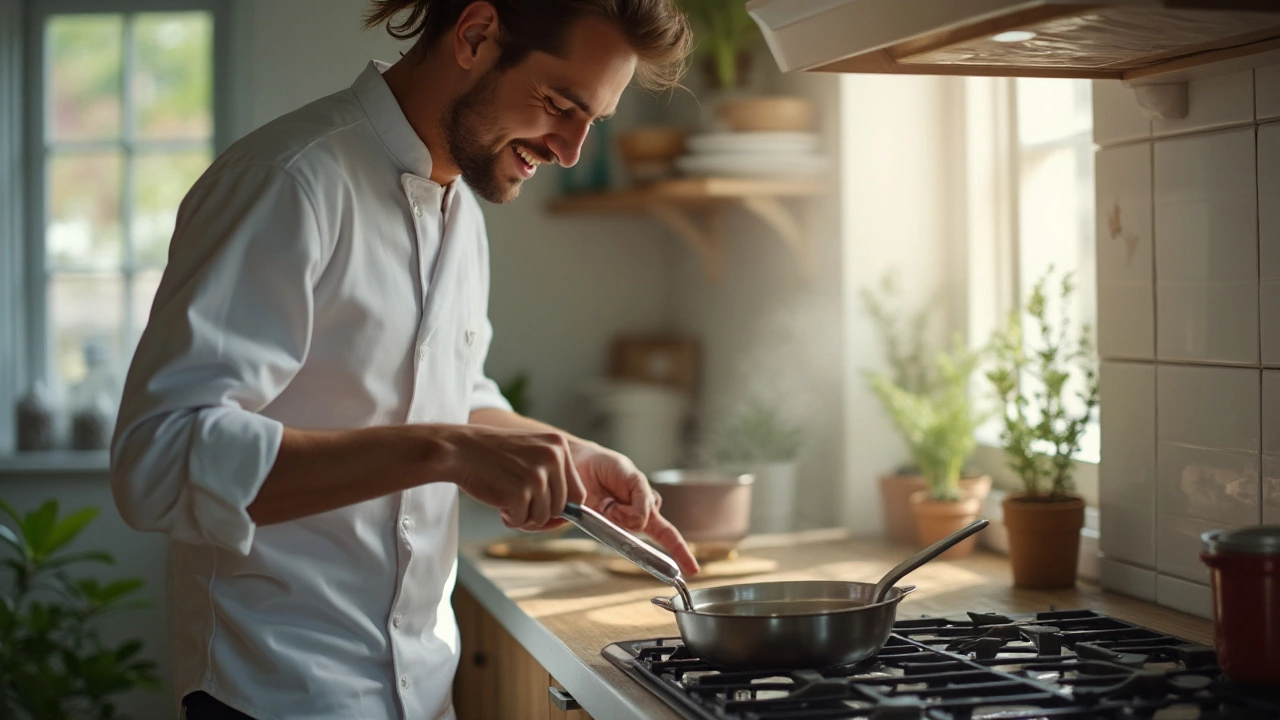
Alternatives to Non-Stick Cookware
The culinary world, both professional and amateur, thrives on the variety of tools available. When it comes to kitchenware beyond the beloved non-stick pans, the options are as colorful as the spices in a gourmet chef’s pantry. Stainless steel is often the champion of this realm. Its durability and ability to handle high heat without breaking a sweat make it a favorite among those who cook with flair and precision. Chefs appreciate how stainless steel can deglaze, sear, and create rich flavors that non-stick pans can't achieve. The heavy-duty construction means it doesn’t warp under heat, offering a consistent cooking surface every time—a crucial feature when working with ingredients that require even cooking.
Cast iron, with its storied heritage, offers virtues of its own. Once seasoned, these skillets become naturally non-stick and are renowned for their excellent heat retention. Perfect for slow-cooked dishes, they impart a unique, smoky flavor that elevates simple ingredients to culinary masterpieces. Remember when famed chef Anthony Bourdain said, "Your kitchen should have cast iron. It’s the closest thing to owning a piece of magic you can cook on"? That endorsement alone contributes to its allure. The thick construction of cast iron ensures that your dishes can go from stovetop to oven seamlessly—a feature rarely achieved by any non-stick counterpart.
Copper pans, though not as common, bring yet another dimension. Their superior heat conductivity allows chefs to make rapid adjustments to temperatures—a necessity for delicate dishes. Though they require more maintenance, their responsiveness makes them worth the extra effort in discerning kitchens. A quick scan of European kitchens, especially French, often reveals a mesmerizing stack of gleaming copper pots and pans, a staple for many traditional chefs aiming for unerring precision. While it’s true they tend to lean on the pricier side, for those who regularly engage in complex culinary ventures, the investment pays off.
For those looking to balance practicality and tradition, anodized aluminum pots and pans provide a compelling solution. Lightweight yet robust, they offer a non-reactive surface that doesn't leach metals into food, maintaining the integrity of your dish's flavor. Eco-conscious cooks often appreciate that these utensils can be produced through sustainable methods. Whether sautéing vegetables or simmering a sauce, these pans manage both light tasks and more demanding culinary feats with grace. Their lighter weight compared to cast iron makes them easier to handle, which is often appreciated in fast-paced kitchen environments.
In this modern age of cooking, ceramic cookware is gaining popularity for its eco-friendly properties and its visually appealing design. Ceramic-coated cookware offers a smoother, aesthetically pleasing alternative to more traditional materials. It's touted as a safer choice too, free from potentially harmful chemicals like PFOA found in some non-stick surfaces. Its versatility in style doesn't detract from its function; these pans provide an evenly distributed heat which aids in perfect cooking. A pinch of attention during cleaning keeps them pristine, making them a delightful addition to any kitchen. No wonder they’re a favorite among health-conscious cooks who prefer a cleaner, chemical-free cooking surface.
Tips for Choosing the Right Pan
Selecting the best cookware can feel overwhelming given the variety of options. However, understanding your cooking needs and the properties of different pan materials can simplify the choice. Start by considering the type of meals you frequently prepare. Chefs often gravitate towards stainless steel pans for their ability to sear meats and vegetables, creating a delicious crust that locks in flavor. Unlike non-stick pans, which are ideal for eggs or delicate fish, stainless steel can withstand high temperatures without releasing harmful chemicals.
Durability is another significant factor. Stainless steel and cast iron pans are renowned for their longevity. They survive the rigors of a hot kitchen without warping or scratching. On the other hand, non-stick pans may need more careful handling and regular replacement. When investing in a pan, think about its heat distribution properties as well. Even heat distribution ensures that food cooks uniformly, preventing burnt spots or undercooked areas.
"A good pan is an extension of the chef," says Thomas Keller, a celebrated chef. "Choose one that feels right in your hand and fits your cooking style."
Surface area also matters. For families, larger pans might be necessary to prepare multiple servings simultaneously. Handles should be oven-safe and provide a firm grip, reducing the likelihood of accidents. Non-slip, heat-resistant handles are a bonus when managing several tasks at once. Price can be a consideration as well. Higher quality often accompanies a higher price, but the initial investment in a top-tier pan can save money over frequent replacements.
If you're debating between various materials like stainless steel, cast iron, or copper, consider using a combination. Each type serves different purposes. A cast iron skillet is great for baking and frying due to its heat retention properties, while a copper pan offers unparalleled heat conductivity. For those who prefer the weightlessness of aluminum, it delivers excellent heat distribution with an added non-stick layer, though care should be taken to avoid scratching.
| Material | Pros | Cons |
|---|---|---|
| Stainless Steel | Durable, Non-reactive | Poor heat conduction without copper core |
| Cast Iron | Excellent heat retention, Inexpensive | Heavy, Needs regular seasoning |
| Copper | Outstanding heat distribution | Can react with acidic foods |
Consider purchasing from a reputable brand known for quality control and customer support. A reliable warranty can extend beyond the typical lifetime of lesser pans. Read reviews from other home cooks and professional chefs to gauge real-world performance. Taking the time to evaluate your needs and researching the best options can make your time in the kitchen more enjoyable and efficient.

